SWOLLEN FEET AND ANKLES AND HOW WWW.DTFOOTWEAR CAN HELP
SWOLLEN FEET AND ANKLES
A video that you need to listen too – especially if you have swelling in the forefront (instep) of your feet or swelling around your ankle:
Swollen feet and ankles are a common problem that will affect most of us at some point in our lives. Most of the time, it is not serious and will resolve quickly, but sometimes it can be a sign of a serious health problem that requires medical attention.
Swollen feet and ankles typically develop when there is a build-up of fluid in the soft tissues. The fluid seeps out of the small blood vessels and collects in the nearby tissues and as result sodium (salt) and water levels increase. The kidneys respond by increasing the amount of blood circulating around the body which can lead to further fluid leakage and more swelling. The lymphatic system should work to remove excess fluid, but if it is not functioning properly, fluid builds up.
Swelling can also occur due to bleeding usually due to an injury, inflammation, infection or lymphedema. The medical term for swollen feet and ankles is peripheral edema.
10 COMMON CAUSES OF SWOLLEN FEET
Here, we will look at the ten most common causes of swollen feet and ankles, the different types of swelling, how to tell if foot swelling is serious and then go on to look at the best-swollen foot treatment options.
If only one foot is affected, it is likely due to a local problem such as an injury or a problem in one of the veins. If the swelling is in both feet, it is probably due to a systemic problem which affects the entire body system such as heart disease .
1) FOOT & ANKLE INJURIES
Injuries to the soft tissues of the foot and lower leg can lead swelling which is usually fairly localized and will only affect one leg. Swollen feet and ankles may develop suddenly or gradually depending on the nature and severity of the injury.
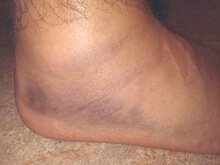
Immediate Swelling: A swollen ankle or foot that develops immediately after an injury is usually caused by bleeding into the joint, known as a hemarthrosis.
The ankle and foot quickly balloon feeling tight and may be accompanied with bruising. Typical causes include a ligament tear or bone fracture. Foot swelling of this nature needs immediate medical attention.
Delayed Swelling: Swelling that builds up slowly, which you may not notice until a few hours or days after an injury, is caused by an increase in synovial fluid in the local area. This occurs when there is an irritation to one of the joint structures e.g. mild ligament sprain which causes the joint to produce excess synovial fluid to try and protect itself and aid healing. There tends to be less swelling than with a hemarthrosis and the amount may vary from day today.
2) MEDICAL CONDITIONS
There are a number of medical conditions with can cause swollen feet and ankles
a) Heart Problems: Problems such as congestive heart failure and hypertensive heart disease can cause swollen feet and ankles.
If heart function decreases, it can’t pump the blood around the body as effectively and pressure builds up in the blood vessels causing fluid to leak into the surrounding tissues. Gravity can then cause this fluid to pool around the feet. Swollen feet and ankles from heart disease tend to get worse during the day.
b) Kidney Problems: One of the important functions of the kidneys is to remove excess fluid from the body and regulate electrolyte and salt levels. If the kidneys are not functioning properly, they don’t eliminate salt and fluid effectively enough which leads to a build-up of pressure on the blood vessels, causing fluid to leak out into the surrounding tissues. Swollen feet and ankles are often one of the first signs of kidney problems and tend to be worst in the morning.
c) Liver Disease: Liver disease can cause a change in the levels of hormones and fluid-regulating chemicals leading to fluid retention.
d) Gout: With gout, high levels of uric acid cause crystals to form in joints such as the big toe. This leads to inflammation of the joint leaving it swollen, red, hot and very painful.
e) Arthritis: Swelling from arthritis tends to be sporadic, coming and going at different times. It is most commonly caused by active inflammatory synovitis (inflammation of the membrane that lines the joint) associated with rheumatoid arthritis.
3) BLOOD CLOT/DVT
Clots can block the blood vessels preventing blood from flowing back up the leg to the heart. A blood clot that forms in one of the major vessels is known as a DVT – deep vein thrombosis. It usually causes pain and swelling in the calf as well as redness and warmth over the area. It will usually only occur in one leg at a time and the pain tends to get worse if you pull your toes up towards you.
You are more at risk of a DVT after severe injuries e.g. broken bones, prolonged inactivity e.g. long-haul flights, surgery or if you suffer from medical conditions such as heart or lung disease. A DVT is a medical emergency – if you suspect a DVT seek medical assistance immediately.
4) PREGNANCY

Pregnancy is another of the common causes of swollen feet and ankles. There are three reasons for this:
a) the excess weight gained puts more pressure on the legs and feet
b) the expanding uterus can place pressure on the blood vessels for the legs and
c) pregnancy hormones cause the body to retain fluids
b) the expanding uterus can place pressure on the blood vessels for the legs and
c) pregnancy hormones cause the body to retain fluids
Severe swelling of feet in pregnancy can be a sign of pre-eclampsia which is a medical emergency so always discuss it with your doctor or midwife.
5) MEDICATION SIDE-EFFECTS
Some medications can cause fluid-retention as a side effect leading to swollen feet and ankles. The most common medications causing this are:

a) Anti-Inflammatories: e.g. steroids and NSAIDs
b) Hormone Drugs: e.g. contraceptives
c) Antidepressants: e.g. tricyclics such as amitriptyline
d) Diabetes drugs: e.g. Avandia & Actos
e) Blood-Pressure Medications: e.g. calcium channel blockers such asamlodipine and nifedipine
b) Hormone Drugs: e.g. contraceptives
c) Antidepressants: e.g. tricyclics such as amitriptyline
d) Diabetes drugs: e.g. Avandia & Actos
e) Blood-Pressure Medications: e.g. calcium channel blockers such as
6) VENOUS INSUFFICIENCY
Veins work to pump blood back up from the feet and legs to the heart through one-way valves. If these valves stop working properly due to weakness or damage, fluid can seep back down and pool causing swollen feet and ankles.
7) CELLULITIS
Cellulitis is caused by a bacteria which enters the body through a break in the skin. The break can be so small sometimes, that you can’t see it. Cellulitis most commonly affects the skin on the lower legs or face. The area appears red, hot and swollen.
Cellulitis is treated with antibiotics and can last anything from a few days to a number of months.
8) PROLONGED INACTIVITY
Staying in one position for long periods without moving around to pump the fluid back up into circulation can cause swollen feet and ankles. A typical example of this is traveling long distance by car or plane. The fluid naturally seeps down to your feet because of gravity. Ideally, you want to get up and walk around every hour or so and when you are sitting, pump your feet up and down to keep the fluid moving around your body. Doing simple exercises can really help.
9) LYMPHEDEMA
A blockage in the lymphatic system causes excess lymph fluid to collect in the tissues and can cause swollen feet and ankles.
It can be caused by a number of things such as infection, injury or cancer treatment such as radiotherapy or the removal of lymph nodes.
Lymphedema is usually treated by a combination of exercises to get the fluid to pump out of the legs and back into the circulation (known as lymphatic drainage), compression bandages such as tubigrip, and specialized lymphatic massage.
10) OTHER CAUSES
There are a few other causes of foot swelling:
a) Obesity: obesity can cause swollen feet and ankles due to the excess weight going through the feet
b) Prolonged Standing: standing or walking for long periods can lead to swollen feet and ankles
c) Gender: edema is more common in women due to the hormone progesterone which causes fluid retention e.g. swollen ankles before menstruation
b) Prolonged Standing: standing or walking for long periods can lead to swollen feet and ankles
c) Gender: edema is more common in women due to the hormone progesterone which causes fluid retention e.g. swollen ankles before menstruation
Different Types of Swelling
There are two types of swelling, pitting edema and non-pitting edema:
1) Pitting Edema: with this type, if you press on the swollen area for a few seconds and then take your finger away, an indentation will be left that lasts for a while. A mild example of this is if you wear socks all day when you take them off at the end of the day, there will be an indentation.
Pitting edema usually results from water retention and is associated with things such as heart failure, pregnancy, and systemic diseases.
2) Non-Pitting Edema: with this type of swelling, no indentation is left when you press on the area. The most common cause of non-pitting edema is lymphedema.
Pitting edema is the most common type of foot swelling, but if there is only a small amount of swelling, there won’t be any noticeable pitting.
TREATING SWOLLEN FEET AND ANKLES
Treatment for swollen feet and ankles aims to improve the lymphatic drainage in the legs to reduce the swelling and associated discomfort. There are a number of ways to do this including specially designed compression bandages, massage, diet and lifestyle changes, and exercises.
In Swollen Foot and Ankle Treatment section, we look at the best ways to treat the different causes of foot swelling, most of which you can do yourself at home. They are generally pretty simple but very effective.
When is Foot Swelling Serious?
Some causes of swollen feet are a medical emergency. If a swollen ankle or foot develops rapidly and profusely, is accompanied by pain, redness, warmth, shortness of breath or fever lasts longer than 24 hours or is getting progressively worse, consult your doctor immediately.
It is really important to understand the underlying cause of the swelling to treat it effectively. So if none of these are sounding like your problem, visit the foot pain diagnosis section for help working out what is causing your swollen feet and ankles and what you can do to solve it.
So more information about our two fantastic combinations of footwear and heat moldable customized inserts
Let this video explain what a therapeutic design or construction is all about dealing with footwear. Therapeutic/Orthotic consider an extra depth construction.
We are a therapeutic line, and the explanation between a conventional comfort line and our’s found in the video below
Now let’s talk, in more detail, about the ten reasons what makes Therapeutic footwear so much superior to a Comfort Shoe:
1) The strongest mid-support in the shoe business. No bilateral movement view the video above for illustrations and a midsection depth that gives you support and the maximum room in the footwear world. One of many reasons why therapeutic is considered extra depth
2) The strongest heel counter in the business that helps create no bi-lateral movement and the tallest heel counter in the footwear world. A reason whey therapeutic footwear considered extra depth
3) A taller toe box to create more wiggle room and space for your toes a reason why considered an extra depth footwear
4)Extended bottoms to give you the fullest width and support than any other shoe line anywhere
5) A lightweight shoe for less wear and tear on your feet but with all that great added support
6) all removable arch support to put a more advanced support system or a customized inserts
7) Women’s styles having a 3 to 1 combination last for better fit and support for your heel
8) Fuller forefront in the construction of the footwear to create more comfort and room for that maximum support and comfort and a reason why considered extra depth footwear
9) Deeper heel counter to build more balance and support to the heel section of the foot and other reason why consider an extra depth footwear
10) Leather lining that creates more flexibility and breathability to the foot
We have 4A (Slender width for Ladies) 2A (Narrow width for Ladies), B ( Medium width for Ladies and Narrow width for Men), D (Medium width for Men and Wide width for Ladies), 2E, 3E, 4E, 5E, 6E, 7E, 9E, 10E, 14E widths in Men’s and Ladies styles
We carry up to 20 in Men’s styles, and 15 in Ladies dealing in lengths
We have 5 to 6 lengths, in selected styles for Men and 4 to 5 in Women’s length
Some additional information and explanation of this type of footwear for all the Ladies out there:
ATTENTION LADIES, HERE IS MORE INFORMATION ABOUT YOUR NEEDS:
We have all those wide widths that are needed but with our 32 new styles of women’s footwear that we will be offering a 4A (Slender) 2A (Narrow) B (Medium) D (Wide) 3E Extra Wide) 5E Extra Extra Wide, 7E Full Extra Wide 10E Extra Full Wide, 14E (Superior Extra Wide Width) widths for you ladies- that is unheard that is offered by one website.
Why having this 3 to 1 combination last is so important in creating that perfect fit for all our ladies. What does 3 to 1 combination mean? The heel counter is 3 times narrow than the ball width of the shoe. Okay, big deal? Well, this is a critical factor because a women heel structure is a great deal narrow than a Men’s and if we made all our Ladies footwear as the same last of a Men’s style- the ladies heels would slipping all day long or have a terrible fit!
Having these 1 to 3 Customized Heat Moldable Inserts ( that is Free and remember that the shoe has to have a removable footbed for these inserts to work. Not all AA widths have this, but we’ll state, on our descriptions if you can receive 1 to 3 pair of these inserts FREE- up to a $240.00 value) will make that perfect fit, comfort and support experience out of this world — especially for those NARROW FEET!.
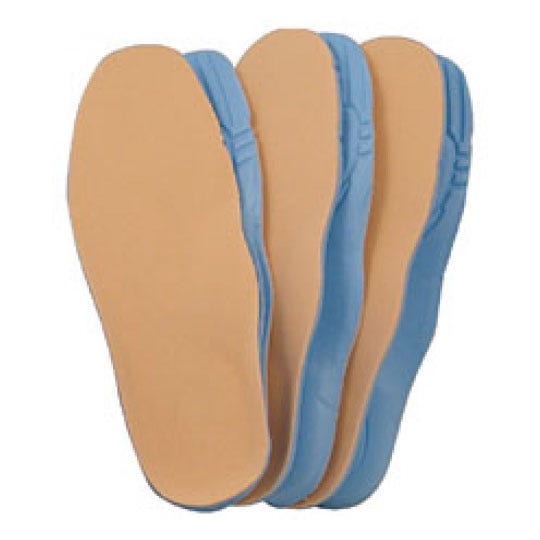
If you know someone (Ladies) that needs sandals, casual footwear, athletic footwear in a 4A (slender width) or AA (Narrow) width- let them know we have then and a great selection as well.
All new Slender (4A) and Narrow (AA) widths for ladies- look out we will have a ton for you to choose. New Dress Boots, up to 14 inches in shaft height, for women, Dress boots and new dress styles for Men as well. All Weather Footwear and Boots for both Men and Women. Some new dressy footwear for Men and women.
All our new and old styles are therapeutic/comfort that has the best fit and support in the shoe world.
It’s nice being called the “King Of Widths”, again 4A to 14E widths, on the internet, and all found at www.dtfootweear.com
#shoes#footwear#diabeticfootwear#widths#sneakers#slippers#therapeutic/orthoticshoes#free#slender#narrow#wide#extrawide#extraextrawide#support#balance#comfort#extradepth#inserts#designerfootwear#dutyfree#freeshipping#oversizes#undersizes#allwidths#finestfootwear#dpmprogram#nofootpain#bnions#hammertoes#corns#charcot#plantarproblems#clawtoes#offload#footsores#tinglinginfeet#poorcirculationinyourfeet#flatfeet#edema#swelling#backpain@anklepain#kneeepain#footpain#tiredfet#sorefeet#hurtingfeet#6etootight#9E310E#14E#4A#2A#NarrowBformen#numberforhelp#freeadvice#customizedinsserts#highinstep#higharch#extendedbottoms#paddedheelcut#heelspur#calluses#6e#7E#returnprogram#wiigleroom#guanateefit#guaanteesizingprogram
Thank you,
Ron Heinlein | President/Founder | Cell # 909–215–1622
Designer Therapeutic Footwear Co.
Follow Us:| Facebook | Twitter | YouTube | LinkedIn
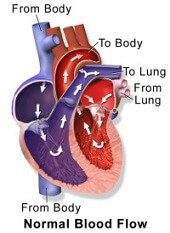

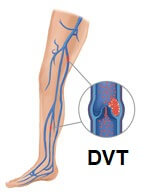
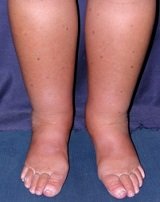
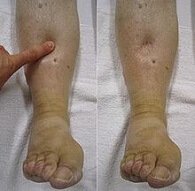
No comments:
Post a Comment